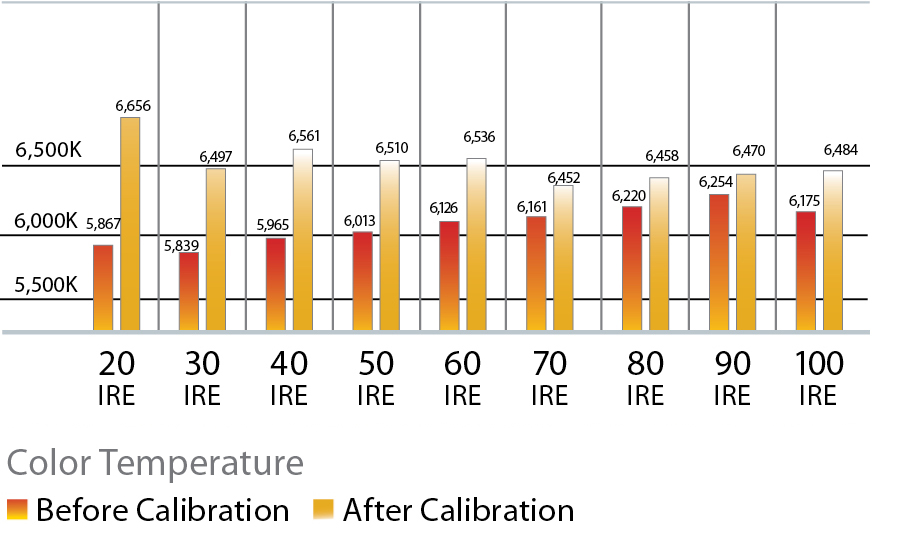Test Report: JVC DLA-X7 3D D-ILA Projector Page 4

BOTTOM LINE
The JVC DLA-X7 is a staggeringly good projector. Its black level is among the best regardless of technology, but most important, this black level is achieved while simultaneously giving off bright whites. The resulting contrast ratio is hopelessly habit-forming and puts nearly all other displays to shame. Combine that with solid video processing and 3D performance, near-infinite setup adjustments, and highly accurate color, and you have a winner.
TEST BENCH
Brightness (100-IRE)
before/after calibration: 19.6 / 18.6
Primary color point accuracy vs. SMPTE HD standard
| Color | Target X | Measured X | Target Y | Measured Y |
| Red | 0.64 | 0.64 | 0.33 | 0.33 |
| Green | 0.30 | 0.30 | 0.60 | 0.60 |
| Blue | 0.15 | 0.15 | 0.06 | 0.06 |
With its THX mode selected, the DLA-X7 projector measured somewhat warm off the neutral gray D6500 standard. After calibration (in the User 1 mode), its grayscale measured nearly perfect. Fine-tuning of the grayscale is possible with RGB gain and bias controls, as well as individual multistep gamma adjustments for each color. Before calibration, the projector averaged 431 kelvins off standard, and only 14 K after. Red, Green, and Blue color primaries were all as accurate as measurable using the Photo Research PR-650 spectroradiometer. There was no overscan present, and the projector is able to resolve a 1-pixel on/off pattern.
After calibration in the User 1 mode (High lamp and 0 iris settings) light output on a 1.0-gain, 102-inch 16:9 screen was 18.55. Black level with this same setup was a surprisingly high 0.004 footlamberts, for a contrast ratio of 4,637:1. In the THX mode, light output was slightly higher at 18.93, and black level was much lower at 0.00117 ftL (16,179:1 contrast ratio). Reducing the iris to -16 dropped the black level to a calculated 0.00029, but since light output in this mode was only 7.55 (26,034:1 contrast ratio), I wouldn’t recommended it for a screen of this size. Reducing the lamp to Normal dropped the light output further but didn’t yield worthwhile increases in contrast ratio to justify the loss in brightness. There were some minor issues with brightness uniformity on white and black test patterns, though it wasn’t visible with actual video. — G.M.




























































